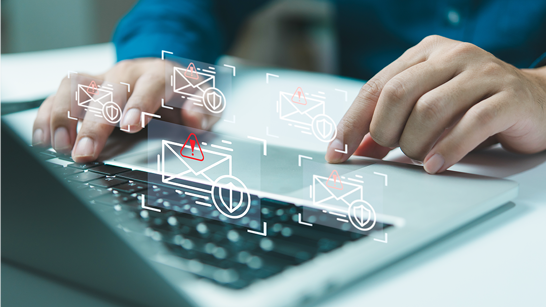Securing E-mail Security with just a few Measures
E-mail Security for .ch Domains: Closing and protecting Gaps
SPF
Sender Policy Framework
DKIM
Domain Keys Identified Mail
DKIM has existed since 2011 and makes it possible to sign e-mail headers using the public key method. In simple terms, DKIM enables the receiving mail server to check whether the e-mail headers have been manipulated during transmission.
Activating DKIM in Microsoft 365 is simple: Just create two DNS CNAME records per domain. So create the two DNS CNAME records and it can be activated in Exchange Online.
DMARC
Domain-based Message Authentication, Reporting and Conformance
DANE
DNS-based Authentication of Named Entities
Since 2015, DANE has published the hash of the mail server's certificate with a TLSA entry. This allows a sending mail server to check whether the receiving mail server offers the correct TLS certificate and prevent «man in the middle attacks». However, this requires the domain to be secured with DNSSEC, which is already the case for almost half of .ch domains. You should also check whether your DNS provider supports TLSA entries.
MTA-STS
SMTP MTA Strict Transport Security
TLSRPT
SMTP TLS Reporting
TLSRPT, also available since 2018, allows you to set up the reporting of TLS problems when sending SMTP - similar to DMARC. This supports the monitoring of DANE and MTA-STS protected domains. Here a TLSRPT provider is required, which prepares the data.
Implementing these measures can significantly increase your e-mail security. Check your domains and bring them up to the latest security standard to arm yourself against the increasing threats in the digital space.
If you have any further questions or require assistance, we will be happy to help.






